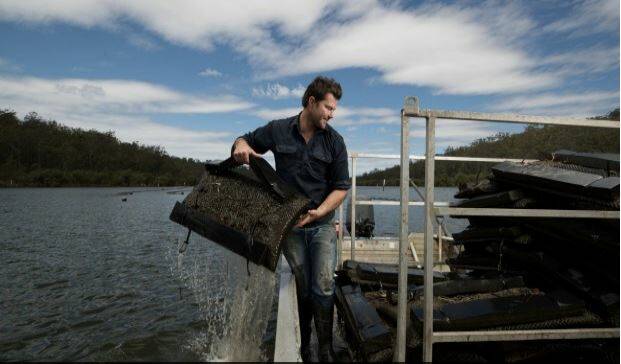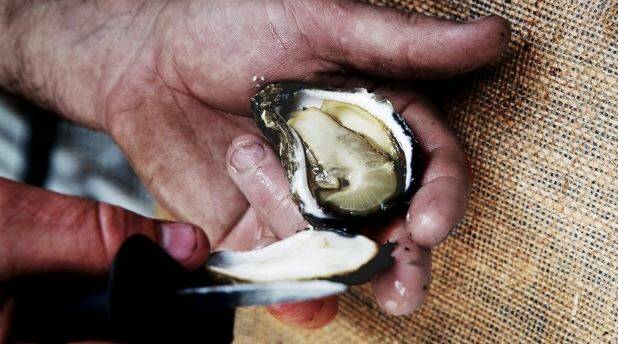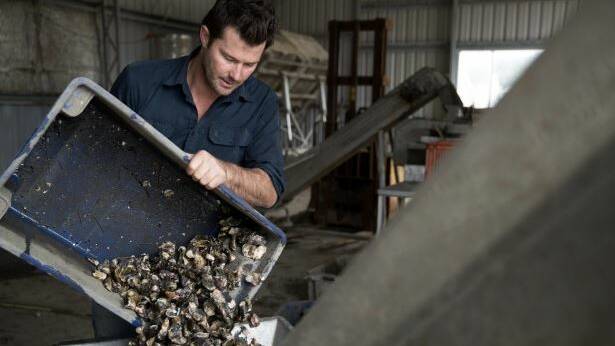
The price of oysters is expected to rise this summer, driven by stock shortages for the briny bivalves.
Subscribe now for unlimited access.
$0/
(min cost $0)
or signup to continue reading
"The days of all-you-can-eat oysters for 10 bucks at the RSL are well and truly behind us," says John Susman, director of seafood sales and consultancy company Fishtales.
The price rise affects both Pacific oysters and Australia's native Sydney rock variety. A major reason for the increase is the limited supply of Pacific oysters after the detection of Pacific oyster mortality syndrome in Tasmania in January 2016.
The virus, harmless to humans but able to kill Pacific oysters within days, caused millions of dollars damage to the Tasmanian oyster industry. A resulting embargo on Tasmanian spats (baby oysters) is affecting oyster supply in NSW and South Australia, the other major oyster-producing states.

"Ninety per cent of Pacific oyster farmers draw their stocks from Tasmanian hatcheries," says Ben Ralston, a fifth-generation oyster farmer who grows Pacific and Sydney rock oysters on the Clyde River in Batemans Bay.
"We haven't been able to restock our leases with Pacific oysters since late 2015," he says. "That's why we're starting to see pressure build now - everybody is getting towards the end of their stock."
A Pacific oyster takes 12 to 18 months to grow from juvenile to harvest-size. The same growth for a Sydney rock oyster takes three years.
"Juvenile Pacific oyster stock is going into South Australian farms at the moment, so hopefully those guys will be all back in business by next Christmas," says Mr Ralston. "But for the next 12 months, Sydney rocks will be the dominant oyster and put a lot of pressure on those growers."

Mr Susman says there has been about a 20 per cent increase in the farm-gate price of Sydney rock oysters and Pacific oysters over the past two to three months. His "finger-in-the-air" estimate is that consumers can expect to pay up to the "high-twenties" for a dozen quality oysters at retail this Christmas, "but possibly even more".
"Yes, consumers can expect to pay more for oysters this year, but with that, they should also be expecting higher quality," he says. "We've had the luxury of cheap oysters for quite a long time, certainly by comparison to international standards. The increase in price will demand that growers consider the quality of the product they put to market much more than they have before. This is a good thing. It drives excellence."
"The NSW oyster industry needed that farm-gate price to come up," says Ewan McAsh, a Batemans Bay-based farmer and marine scientist at Signature Oysters, which supplies oysters from 25 farms to restaurants across Australia. Mr McAsh has recently restocked all his south coast oyster farms with Sydney rock oysters.
"The price rise allows businesses to become more profitable and invest," he says. "In the last 30 years, NSW oyster production has been dropping and profitability has almost dropped to zero. I think this is the spring the industry needs to come back flying."
Mr Susman says that while growing Pacific oysters and the much less common angasi variety is important to support a rich oyster landscape in Australia, there is significant incentive for farming Sydney rock oysters.
"The Pacific oyster is 97 per cent of global production," he says. "The Sydney rock oyster only grows along 1500 kilometres of the Australian east coast and is 0.1 per cent of global production. It's a point of difference you can sell at a premium price."
"The oyster farmers have reached this crossroads where they're waving goodbye to the commodity nature of their industry and becoming a super premium food item to be proud of. It's no longer about preferring your oysters natural, kilpatrick or mornay. The next generation of oyster consumers will be looking at oysters by species, grower and season.
“The future of Australian oysters is fantastic."

